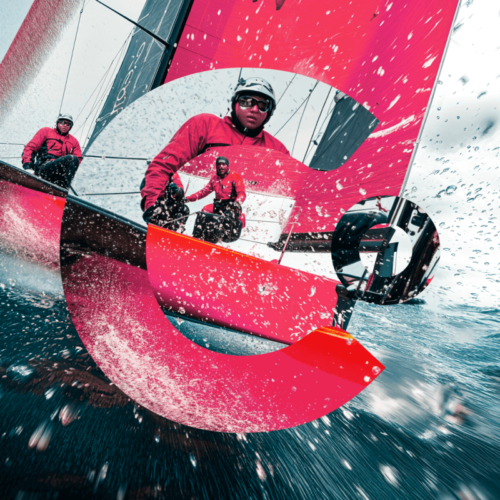In today’s ever-more-competitive business-to-business (B2B) digital marketing landscape, you already know you need to track your numbers. Those who are ahead of the pack have a strategy that captures the right customer information at the right lead generation milestones.
Getting analytics and conversion rate tracking right leads to better data, better customer insights, and ultimately better marketing performance and business advantage.
So how can you tell if your conversion rate optimization strategy is on track? Or where do you start if you don’t have a conversion strategy?
The importance of analytics in digital marketing: Understanding the basics
Keep in mind when you start building or updating your analytics strategy that there are a lot of potential tracking opportunities, and that the more you capture about your website visitor, the better the insights you can gain. Even if you don’t have a robust suite of analytics tools at your disposal, with some planning and follow through, you can position yourself and your organization for success.
To get started, make sure you have an optimization plan that accounts for relevant data capture, lead conversion analysis, and deeper analytics. This plan can be broken down into three key areas: digital marketing strategy, conversion channel analysis, and tool selection and configuration.
01. Adopt a B2B analytics plan into your marketing strategy
As a B2B tech player, your digital marketing strategy likely already accounts for the long conversion path typically followed by the B2B customer. This is critical to aligning your conversion rate optimization plan with your users. While your conversion rate optimization plan will ultimately result in improved audience understanding, make sure that you’re leveraging any information you already have. Potential inputs include primary and secondary market research, established key performance indicators (KPI), company strategy documents, product documents, and other sources.
These inputs help you understand both what you know, as well as what you want to know about your sales funnel. With this information, you can identify, update and iterate your user personas, key tools in making sure you have your prospective lead conversion paths recognized and prioritized.

Deeper dive: Conversion channel analysis
With the context understood, you’re ready to take the next step and start conversion channel analysis. When it comes to lead conversion, content is king, so if you don’t already have a thorough understanding of your existing content and content opportunities, then that should be the focus of your attention at this point.
Once you understand your content, both existing and planned, you are in a position to validate that the content aligns with your personas – and identify key opportunities to track B2B purchasers as they move through the process.
02. Track CTA and form submission for key analytics capture points
There are many common KPI to consider as general guides along the B2B purchase conversion path. Two important areas to consider are calls to action (CTA) and form submission opportunities. Common conversion path tracking opportunities surrounding CTA include the following:
- Sales-ready form submit
- Request a quote
- Request a demo
- Request an evaluation
- Free trial
- Free download
- Free evaluation
- Technical specification requests
- Requests for proposal
- Contact sales
High quality, gated content affords a critical opportunity to capture information on users as they work their way through the conversion path. Content types that lend themselves to form-gating opportunities include the following:
- White papers
- Independent research reports
- Third-party studies
- Analyst reports and collateral
- Webinars
- Podcasts
- Email newsletters
- Blogs
- Press releases and company information
- Premium or subscription-based content
You can also capture valuable data by reviewing your search performance: Both how a potential customer is searching your site – assuming you have site search – and how organic search referrals are helping the customer find your products.
Be careful to separate paid search from organic search. Organic search is the better conversion path metric, while paid search can skew results.
03. Put your analytics strategy into action
Once you understand your content and the opportunities it affords to optimize your lead conversion strategy, you’re ready to start evaluating conversion optimization tools that can best support your strategy. Look for measurement accuracy and data visualization tools as key factors.
Many of the more-sophisticated tools come with large price tags, but there are conversion optimization solutions that can be adapted to suit nearly any budget.

Two relatively simple techniques to help you capture and analyze campaign performance are UTM codes, which can help you understand which of your campaigns is bringing the most users to your site using Google Analytics or other tools, and A/B testing, which can help you evaluate the performance of your forms and CTAs by comparing different versions with website visitors in real time.
- Google Analytics – The ubiquitous platform can be used by any website to capture detailed website audience information from site visits and bounce rate to much more complex tracking, including conversion path tracking toward defined goals.
- Marketo – This Adobe marketing automation platform enables lead management using website forms. The platform database supports automated targeting of leads as well as A/B testing.
- VWO – This platform helps optimize your website performance by progressively learning and directing user paths leveraging the information developed. The persona-based decision making means different users get different results by target group. A/B testing along these paths helps drive additional conversion optimization.
- Demandbase – This account-based marketing automation platform delivers specific details around tracking individual users, helping you know more about who exactly is coming to your site. It leverages IP matching to determine the company where the user works and extrapolates a profile for targeted, account-based marketing.
If you build, they will be tracked
Building, maintaining, and optimizing your conversion strategy is a critical part of any digital marketing plan and is a continuous process. With the right content and content marketing, conversion channel analysis, tools, and techniques, you can position your company for success.






